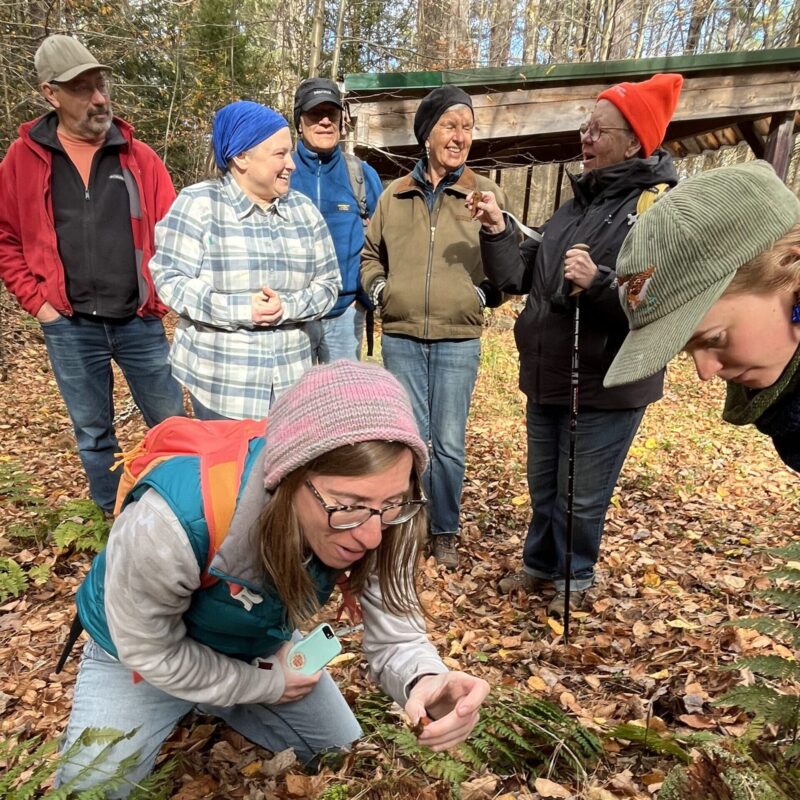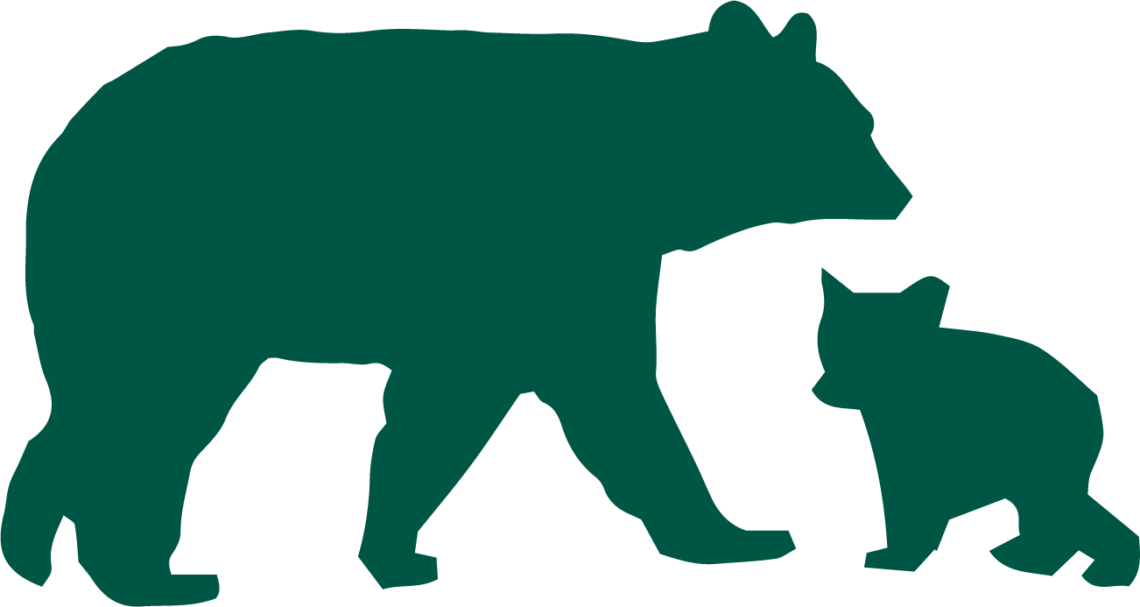How you can help the land through volunteer biodiversity monitoring

Biodiversity monitor Katy Dieber loves tiny mushrooms – and she’s about to observe one for science.
This year, Hilltown Land Trust kicked off a biodiversity monitoring program that helps us understand the deep variety of life on the growing portfolio of land in our care. Since January, over 40 community members have added 620 observations of plants, animals, and fungi on our conserved lands using the iNaturalist community science app.

As we double our stewardship capacity through a transformative grant, species data gathered by volunteer monitors will be essential for informing our stewardship practices. For example, iNaturalist data about vulnerable species like white ash, and the habitats they belong to, will help us establish a baseline before climate change further shifts forest composition.

This coconut milk cap (Lactarius glyciosmus) oozes out a distinctive milky latex substance when its gills are cut. You can view this mushroom and other observations on iNaturalist.
“Knowing, understanding, and developing a relationship with land is the only way we can make responsible stewardship decisions about our nearly 5,000 acres of conserved land,” says HLT’s Land Conservation and Stewardship Manager Jess Applin. “In order to do this, we want and need to engage the community—we need many perspectives and eyes on the land. The great thing about iNaturalist is that it allows both scientists and everyday people to contribute really meaningful data to ecological science and land conservation.”
I believe that the earth’s biodiversity is our greatest inheritance, and the greatest gift we can bequeath to future generations.
– Keith Wright, HLT volunteer biodiversity monitor
Seasonal trainings give volunteers a more in-depth look at biodiversity monitoring. Participants focused on botany this past summer and fungal diversity in this fall, and will learn about tree bark ID this coming winter. These volunteers build naturalist skills, plus a sense of connection to the land and to each other.

“I believe that the earth’s biodiversity is our greatest inheritance, and the greatest gift we can bequeath to future generations,” says volunteer biodiversity monitor Keith Wright of Goshen. “These many species have developed over hundreds of millions of years and are a source of beauty, biomechanical wonder, and the repository of an immense genetic library.”
Keith adds, “We need to do what we can to understand it in order to protect it for future generations. And aside from that lofty ideal, monitoring biodiversity is just fun and interesting!”
You can start biodiversity monitoring with these simple steps.

Nature novices and experts alike can contribute to community science right here in the Hilltowns. Show us what you see!
- Download the free iNaturalist app and create an account.
- Visit HLT’s public trails and take photos of plants, animals, and more using the iNaturalist app.
- Join HLT’s iNaturalist project.

